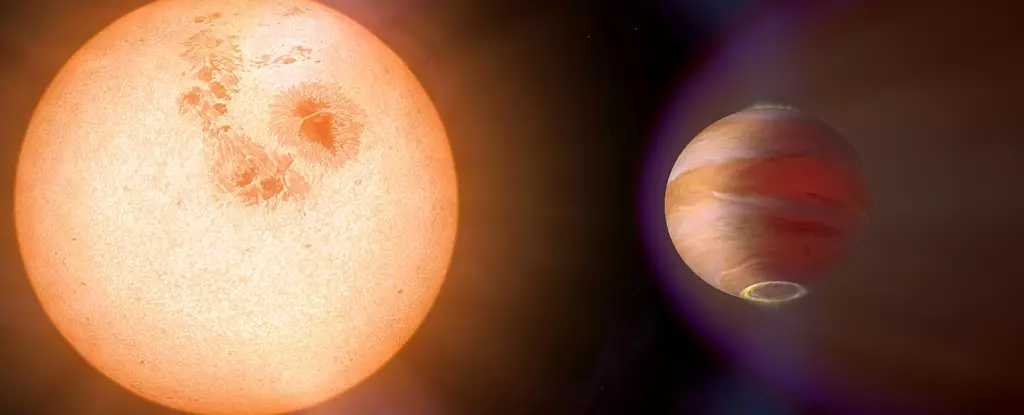In the multifaceted realm of astronomy, one of the most intriguing puzzles is the metallic content of stars and its implications for our understanding of stellar evolution. Astronomers have made significant strides in measuring the metallicity—the abundance of elements heavier than hydrogen and helium—of stars with remarkable precision. Among the fascinating revelations is the existence of co-natal stars, which are thought to have originated from the same giant molecular cloud (GMC). While these stars typically exhibit similar metallicity levels, recent investigations have uncovered significant discrepancies in the metallic content of certain sibling stars. This article delves into the underlying causes of these differences, focusing on new research that posits rocky planets may be the key players in this celestial conundrum.
The recent study, “Metal pollution in Sun-like stars from destruction of ultra-short-period planets,” authored by Christopher E. O’Connor from Northwestern University and Dong Lai from Cornell University, has provided fresh insights into this astronomical phenomenon. It has been suggested that the pronounced differences in metallicity among sibling stars may stem from the engulfment of rocky planets—rich in metals—by their host stars. Such findings challenge the conventional belief that co-natal stars inherently possess similar compositions. The authors present their findings on the pre-print platform arxiv.org, advancing a hypothesis that links the presence of ultra-short-period (USP) exoplanets to metallicity discrepancies.
Ultra-short-period planets orbit their stars extremely closely, often completing a full revolution in just a few hours. These planets, with sizes not exceeding two Earth radii, share compositions analogous to our home planet. Despite their intriguing characteristics, the origins of USP planets remain elusive, with two leading theories: they may either have migrated inwards from farther orbits or represent remnants of larger celestial bodies that lost their atmospheres due to intense stellar radiation. Although such planets are rare—observed around only 0.5 percent of Sun-like stars—this research implies that they may have been more common in the past and subsequently consumed by their stars.
The paper details several dynamic scenarios through which these rocky planets might meet their demise. The researchers identify three primary mechanisms for USP engulfment: high-eccentricity migration, obliquity-driven migration, and environmental interactions within compact planetary systems. Through high-eccentricity migration, a proto-USP could find itself spiraling inward toward its host star, driven by complex gravitational interactions that lead to a swift loss of eccentricity and a transition into a circular orbit. Conversely, obliquity-driven migration highlights how companion planets may induce shifts in the orbit and spin of a USP, drawing it closer to the star until it is consumed.
Through modeling, O’Connor and Lai suggest that the engulfment of USPs likely occurs between 0.1 and 1 billion years following their formation. Their results indicate a strong correlation between the presence of compact multi-planet systems and metallicity pollution in Sun-like stars. This correlation provides a fertile ground for future investigations into the relationship between planetary architecture and stellar composition.
The implications of this research extend far beyond the understanding of co-natal stars. If the engulfment of rocky planets is a common occurrence leading to measurable pollution in stellar metallicity, it points to an intriguing link between a star’s properties and the structure of its surrounding planetary system. The authors postulate that among polluted stars, a noteworthy percentage should exhibit transiting planets with masses around five Earth masses and orbital periods ranging from four to twelve days.
Nevertheless, the authors caution against drawing overly broad conclusions. They note that signs of metallicity pollution can diminish over time as elements settle within the star, potentially skewing estimates of how many stars exhibit this phenomenon. Additionally, the authors acknowledge that more violent forms of planetary interactions, such as planet-planet scattering or the destruction of hot Jupiters, could introduce further complications to the mechanisms of pollution.
As the scientific community continues to investigate these stellar dynamics, the findings presented by O’Connor and Lai highlight a burgeoning field ripe for exploration. Future research will undoubtedly refine our understanding of how different types of exoplanets influence the chemical profiles of their host stars. By elucidating the factors that contribute to metallicity discrepancies among co-natal stars, astronomers may unveil deeper insights into the lifecycle of stars and their planets.
This ongoing investigation into the intersection of stellar metal content and planetary existence not only enhances our knowledge of individual stars but also sheds light on the complex interactions that govern the formation and evolution of stellar systems in our universe. As astronomical techniques and technologies advance, the quest to unravel the mysteries of stellar metallicity promises to reveal even more fascinating secrets hidden within the cosmos.

